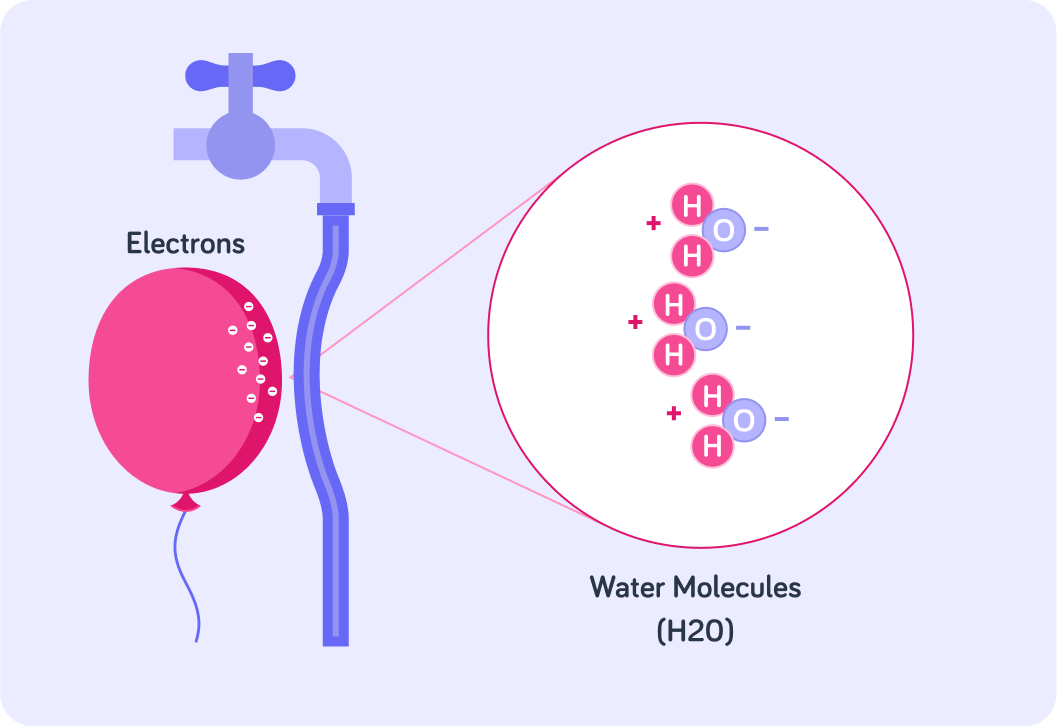YOU ARE LEARNING:
Static Electricity

Static Electricity
By adding or removing electrons from a substance, you can make it charged. Static electricity is caused by the transferral of electrons due to friction.
If you rub a balloon on your hair, you can then stick it to a wall. Why is that?

How does rubbing a balloon give it a charge?

Is an electrostatic force a contact or a non-contact force?

An electrostatic force is formed from the friction between two objects.
When two objects are rubbed together electrons are transferred from one object to the other, which gives the objects opposite charges. If they come close to each other, they will attract each other.
What charge will an object have, once some of its electrons have been transferred to a different object?

What charge will an object have, once electrons have been transferred to it?

Complete this sentence with one word: Electricity is the flow of ...

What is the name of the type of electricity that is created when you rub a balloon on your hair?

What do we call objects which allow electricity to flow through them?

Static electricity is the electricity created by the electrostatic force. When an insulator gains a charge, it stores this charge and it builds up. Eventually when it discharges, it is large enough to create a spark known as static electricity.
The diagram shows a balloon which has been rubbed and given more electrons. The balloon is then held near a flowing tap.
See above image.

The water bends towards the balloon because the __________ in the water are attracted to the balloon.
A) protons B) electrons


If you rub a plastic rod and transfer electrons to it, and do the same thing with another rod, what would happen if you held the two rods close together?

We can show the production of electrostatic forces in many simple experiments, such as the ones outlined in the previous slides. All these demonstrations rely on the principles that like charges attract each other and similar charges repel each other.
